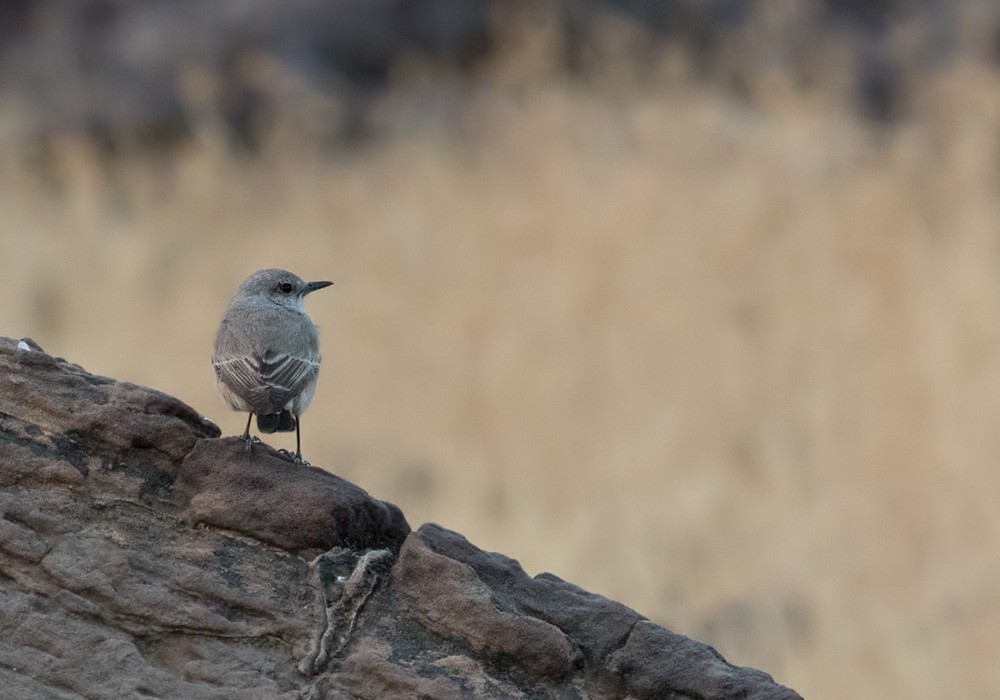Red-tailed Wheatear
A species of Wheatears, Also known as Rusty-tailed Wheatear Scientific name : Oenanthe chrysopygia Genus : Wheatears
Red-tailed Wheatear, A species of Wheatears
Also known as:
Rusty-tailed Wheatear
Botanical name: Oenanthe chrysopygia
Genus: Wheatears
Content
Description General Info
 Photo By Lars Petersson
Photo By Lars Petersson Description
It is 14.5 cm long with a wingspan of 26–27 cm and a weight of about 20-27 g. The plumage is fairly drab, mainly grey-brown above and greyish-white below. It has a faint pale stripe over the eye, a rufous tinge to the ear-coverts and silvery-white underwing-coverts. The rump and bases of the outer tail-feathers are reddish while the rest of the tail is black forming a T-shaped pattern. There is little difference between males and females but the male has black between the eye and bill. The female Kurdistan wheatear can be very similar but usually has white bases to the outer tail-feathers. Adult males and some females of the Kurdistan wheatear are quite different with a black face and throat and greyer upperparts. The song is a simple repeated whistle. The bird has several clicking, rasping and whistling calls. 
Size
14 cm
Nest Placement
Ground
Feeding Habits
Red-tailed Wheatear primarily eats invertebrates such as ants and beetles, occasionally consuming plant matter and seeds. It forages on the ground or from perches, employing 'perch-and-pounce' and 'bound-and-grab' techniques. Known for its agility on rocky terrain, red-tailed Wheatear also sallies after flying insects and digs for prey.
Habitat
The habitat of red-tailed Wheatear encompasses arid rocky and stony landscapes, including slopes, screes with scattered boulders, mountain ridges, and dry, fallow valleys, usually adjacent to perennial streams. Vegetation in these areas is typically sparse and consists of dwarf montane shrubs and a seasonal proliferation of herbs. During migratory and winter periods, red-tailed Wheatear occupies rocky hills, steppe zones, desert scrubs, and low, stony terrains across broader geographical regions known for their warm and dry environmental conditions.
Dite type
Insectivorous
General Info
Feeding Habits
Bird food type
Behavior
It usually forages on bare ground, feeding mainly on insects such as ants, beetles and caterpillars. It will pick food from vegetation, dig with its bill for beetle larvae and launch attacks from an exposed perch on a rock or stone. It breeds from late March or April to June, raising two broods. The nest is a cup of grass and other plant material built in a hole in rocks, stones or a wall. Four to six eggs are laid and are incubated for 13 days. The eggs are pale bluish-white, sometimes with reddish-brown spots. 
Distribution Area
Its breeding range extends from north-east Turkey, Armenia and Azerbaijan eastwards through Iran to Afghanistan, southern Tajikistan and western Pakistan. It migrates south to winter in the Arabian Peninsula, Eritrea, southern parts of Iraq and Iran, Pakistan and north-west India. It has occurred as a vagrant in Israel, Ethiopia, Djibouti and Nepal. It breeds in mountainous areas from 1,200—4,000 m above sea-level. It nests on steep, barren, rocky ground with little vegetation. It winters at lower levels occurring on rocky hills, steppe, scrubland and semi-desert. 

 Photo By Lars Petersson
Photo By Lars Petersson Scientific Classification
Phylum
Chordates Class
Birds Order
Perching birds Family
Old world flycatchers Genus
Wheatears Species
Red-tailed Wheatear